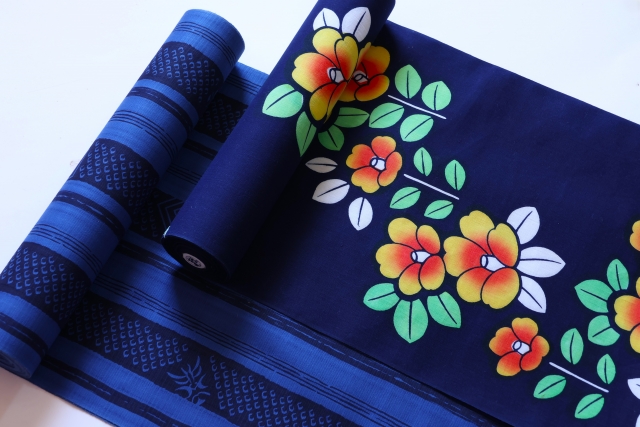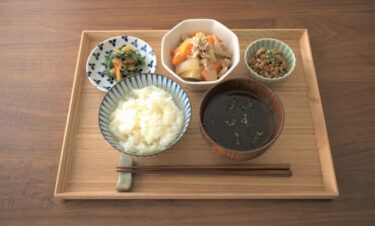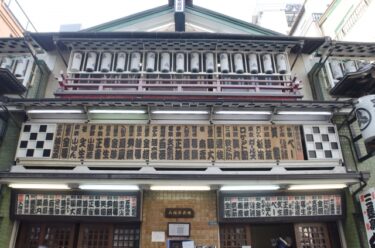For foreigners interested in wearing or purchasing a kimono in Japan, especially those who are taller or have a larger frame, there are a few important things to keep in mind. Traditional kimono fabric, known as tanmono, is typically narrow in width (about 36-38 cm), and this can make creating a properly fitting kimono challenging for people who are larger than the average modern Japanese person. Here’s a detailed guide on how to navigate the process of having a custom kimono made, focusing on a homongi (a formal kimono for semi-formal occasions) and what to expect in terms of time, cost, and necessary accessories.
1. Kimono Fabric and Size Considerations
Kimono are traditionally made from narrow strips of fabric, which means that for taller or larger individuals, additional fabric may be required. In some cases, custom fabric may need to be woven, increasing both the cost and production time. The use of multiple tanmono to create one kimono can also add to the expense, as more fabric is needed to accommodate a larger body frame.
For example:
- A kimono for a person of average height (160 cm) generally requires one tanmono.
- Taller individuals or those with broader shoulders may require 1.5 to 2 tanmono, which can raise the cost significantly.
2. Process and Timeline
If you’re having a custom kimono made, here’s a typical outline of the steps involved:
- Consultation and Measurements: The process begins with a consultation where measurements are taken. For foreign visitors, some stores or tailors are familiar with larger sizes and can provide advice on fabric selection.
- Fabric Selection: You’ll choose a fabric that suits your needs—homongi kimono fabric is often made of silk, which is ideal for formal settings.
- Tailoring: Once the fabric is selected, a skilled kimono maker will start tailoring the garment. For custom orders, tailoring can take anywhere from 1 to 3 months, depending on the availability of fabric and the complexity of the design.
- Fitting: After the kimono is made, there is usually a fitting session to ensure everything fits perfectly.
3. Cost Breakdown
The cost of a custom-made kimono depends on the type of fabric, the amount of fabric needed, and the labor involved in tailoring. Here’s an approximate breakdown for a homongi:
- Fabric (tanmono): High-quality silk fabric for homongi can range from ¥100,000 to ¥500,000, depending on the quality and design.
- Tailoring fees: Tailoring costs usually start at ¥50,000 and can go up to ¥200,000, depending on the complexity and the additional fabric required for a larger size.
- Accessories: In addition to the kimono itself, several accessories are required for wearing a kimono:
- Obi (belt): ¥30,000 to ¥100,000
- Obi-jime (decorative cord): ¥5,000 to ¥20,000
- Obi-age (sash that supports the obi): ¥3,000 to ¥15,000
- Nagajuban (kimono undergarment): ¥20,000 to ¥50,000
- Tabi (socks): ¥1,500 to ¥5,000
- Zori (sandals): ¥10,000 to ¥50,000
- Datejime (waistband): ¥2,000 to ¥5,000
- Koshi-himo (waist ties): ¥1,000 to ¥2,000 each (multiple may be required)
4. Total Cost Estimate
For a complete kimono ensemble, including accessories, expect to spend between ¥250,000 and ¥800,000, depending on the quality of the materials and the level of customization needed for your body size.
5. Types of Kimono
Understanding the types of kimono may help when deciding what is suitable for formal or informal occasions:
1. Furisode (振袖)

- Description: Furisode is the most formal kimono worn by unmarried women. It’s known for its long, flowing sleeves, which can extend up to 114 cm. The long sleeves signify youth and single status.
- Occasions: Furisode is worn at highly formal events, such as weddings, coming-of-age ceremonies (Seijin-shiki), and tea ceremonies.
- Key Features: Bold, colorful designs and long sleeves. The fabric is often luxurious silk, and furisode is usually worn with a formal obi.
2. Homongi (訪問着)

- Description: Homongi is a semi-formal kimono for women, characterized by patterns that flow seamlessly across the shoulders, sleeves, and hem. It’s suitable for both married and unmarried women.
- Occasions: It’s often worn at formal gatherings, like tea ceremonies, weddings, or parties, and can also be used for visiting or special outings.
- Key Features: Elegant, continuous patterns that cross the seams, making it more formal than some other kimono types, but not as extravagant as furisode.
3. Iromuji (色無地)
- Description: Iromuji is a single-colored kimono without any patterns or with very subtle designs. It can range from soft, muted colors to bold hues and is considered a versatile garment.
- Occasions: Iromuji can be worn for both formal and semi-formal events, including tea ceremonies, weddings, or funerals (depending on the color).
- Key Features: Solid-colored fabric, often with no patterns. The simplicity of iromuji makes it highly adaptable, depending on the accessories and obi paired with it.
4. Tomesode (留袖)
- Description: There are two types of tomesode: kurotomesode (black tomesode) and irotomesode (colored tomesode). Tomesode is a formal kimono typically worn by married women. It features elegant patterns near the hem, and the upper part of the kimono remains plain.
- Occasions: Kuromomesode is worn by the mothers of the bride and groom at weddings. Irotomesode can be worn at formal events like weddings, receptions, or formal ceremonies.
- Key Features: The patterns are placed below the waist, with the upper part plain. Kuromomesode is always black, while irotomesode can come in various colors.
5. Tsumugi (紬)

- Description: Tsumugi is a casual, woven kimono often made from hand-spun silk. It has a more relaxed, rustic feel and typically features simple or geometric patterns.
- Occasions: Tsumugi is worn for casual outings or informal gatherings. It’s not appropriate for formal events.
- Key Features: Textured fabric with a rustic, handmade quality. Patterns are often simple and subdued, and it’s highly valued for its craftsmanship.
6. Yukata (浴衣)
- Description: Yukata is a casual, lightweight summer kimono made of cotton or synthetic fabric. It’s commonly worn during summer festivals, at hot spring resorts, or even at home as loungewear.
- Occasions: Worn at summer festivals, fireworks displays, or while staying at traditional inns (ryokan) or onsen (hot springs).
- Key Features: Made from cotton or polyester, yukata are light, colorful, and easy to wear. Unlike other types of kimono, yukata do not require a nagajuban (inner garment) and are worn with casual obi.

7. Komon (小紋)
- Description: Komon features small, repeated patterns across the entire kimono. It’s a casual kimono worn for everyday outings or casual events.
- Occasions: Komon is perfect for casual gatherings, dinners, or outings with friends. It’s more relaxed compared to formal kimonos.
- Key Features: Small, repetitive patterns. Depending on the accessories, it can be dressed up slightly for semi-formal occasions.
8. Shiromuku (白無垢)
- Description: Shiromuku is a pure white kimono worn by brides in traditional Japanese weddings. It’s a highly formal garment and symbolizes purity.
- Occasions: Worn exclusively by brides during the wedding ceremony.
- Key Features: All-white, often paired with an elaborate obi and headpiece. The fabric is luxurious, often silk or brocade.
9. Uchikake (打掛)
- Description: Uchikake is an outer kimono worn over a wedding kimono. It’s highly decorative and usually made of silk with elaborate embroidery or designs.
- Occasions: Worn by brides during traditional weddings or by actors in stage performances.
- Key Features: Heavily embroidered and worn open over the kimono without an obi.
10. Haori and Hakama (羽織と袴)
- Description: Haori is a traditional short coat worn over kimono, while hakama are pleated trousers or skirts worn over the kimono.
- Occasions: Haori can be worn casually or formally, depending on the style, while hakama are often worn during formal events like graduations or by men at weddings.
- Key Features: Haori is open-fronted, and hakama gives a more structured, traditional appearance.
6. Renting a Kimono
For visitors who want to experience wearing a kimono but aren’t ready to invest in a custom-made one, renting is a good option. Kimono rental shops often offer a range of sizes, and some cater specifically to foreigners. Rental costs for a day typically range from ¥5,000 to ¥20,000 depending on the kimono’s style and the services included (like hairstyling or photography).
7. Important Tips
- Plan in Advance: If you are having a kimono custom-made, be sure to plan ahead. Depending on the shop, it can take months for the entire process to be completed.
- Communicate Your Needs: Especially if you are taller or have a larger frame, clearly communicate your size and expectations during the consultation. Some shops are more familiar with making kimono for non-Japanese body types and can better accommodate your needs.
Having a kimono custom-made is a significant investment of both time and money, but it can result in a truly personalized and traditional garment that will last for years.








